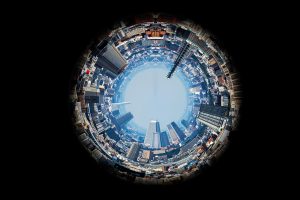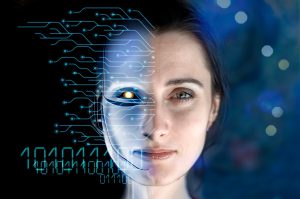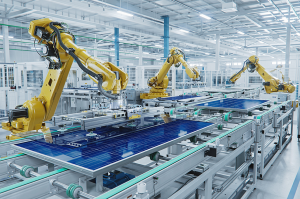From leaping tall buildings like spiderman, attending virtual classes from the comfort of your home to streaming data live, immersive technology is reframing our understanding of the world.
”It is predicted that by 2030, VR and AR will be used in 23 million jobs, with a £1.4 trillion boost to the global economy”
Despite the predictions made by the industry experts, understanding of immersive technologies is only limited to augmented reality and virtual reality. In fact, Immersive interactive technologies are quite a buzz for the businesses of today and the future. But many people are still unfamiliar with the concept of immersive technology.
Before we dive deep into the types of immersive technologies and how they are revolutionizing the world, let’s first understand what immersive technology is all about?
What is Immersive Technology and Immersive Experiences?
Immersive Technologies create unique experiences by integration of virtual content with the physical reality. In layman’s terms, an immersive experience refers to amalgamation of real and virtual elements of the world to view superficial content.
Mental and physical immersion that both help users immerse themselves completely in the storyline where they feel a sense of deep connection with the plot and characters. And the more the immersion, the more present the users feel involved in the environment created is real.
Immersive technologies such as AR, VR, and mixed reality are being used in various industries like Manufacturing, Retail Gaming, Entertainment, etc to engage customers, ease out daily operations, and simulate an environment.
Today, organizations are experimenting with both Augmented reality and Virtual reality for creating better customer and employee experiences. The immersive interactive technologies are broad in scope and are very significant in terms of creating an impact on businesses and personal lives.
Let’s take a small example to understand the effectiveness of immersive technology experience and how it influences a user’s experience.
EXAMPLE:
For instance you decide to purchase a refrigerator but you have budget constraints. After navigating different websites you plan to visit the nearest showroom to purchase a refrigerator that suits your budget.
But the moment you enter the showroom you find yourself surrounded by multiple refrigerators that fall within your budget.
Amidst all these confusions, you come across a 3D screen that displays all the core features of the refrigerator. This finally clears your confusion and you buy the best suited refrigerator with the best functionalities.
What you just witnessed was immersive user experience that helped you in making the right purchase decision by stepping into an augmented universe.
The most pressing questions you will come across when using interactive immersive experiences is are they actually good? How effective they are? To how many levels they can engage a user?
Well, being sceptic on the effectiveness of immersive interactive experiences is pretty normal.
1. Virtual Reality
Virtual reality is a technology that creates a simulation with the help of virtual objects. The viewers walk through the virtual world by using headsets or gestures that make it an interactive technology.
USES OF VIRTUAL REALITY OUTSIDE OF GAMING
Virtual reality is transforming most industries with its immense applications and its uses are not only confined to gaming world but has also expanded to other industries.
![]() Healthcare Industry: This industry has been the biggest adopter of virtual reality. VR is utilised in conducting precise surgeries, training, and mental health issues by providing exposure therapies, pain relief surgeries, and designing new drugs.
Healthcare Industry: This industry has been the biggest adopter of virtual reality. VR is utilised in conducting precise surgeries, training, and mental health issues by providing exposure therapies, pain relief surgeries, and designing new drugs.
![]() Automotive Industry: Virtual Reality can also be used is improving the processes by identifying car behaviours, predicting road scenarios, simulation for car learners by using Artificial Intelligence, designing the vehicle etc.
Automotive Industry: Virtual Reality can also be used is improving the processes by identifying car behaviours, predicting road scenarios, simulation for car learners by using Artificial Intelligence, designing the vehicle etc.
![]() Other Industries: The big players have been using virtual reality to conduct early engineering reviews. Post pandemic, the shopping experience has completely been transformed. With the emergence of metaverse people can try on clothes and create virtual personas of themselves. This has further made shopping a more delightful experience.
Other Industries: The big players have been using virtual reality to conduct early engineering reviews. Post pandemic, the shopping experience has completely been transformed. With the emergence of metaverse people can try on clothes and create virtual personas of themselves. This has further made shopping a more delightful experience.
The learning and development industry has greatly benefited from various applications through VR training, soft skills learning, and digital twin campuses. Virtual reality has a long way to go and presents infinite possibilities to build unique immersive experiences.
2. Augmented Reality
Augmented reality is the altered form of reality in which the real world gets enhanced with the use of superimposed content.
The widely used Snapchat filters, Pokemon Go, and Google Glass are some well-known examples of AR. This technology was born in the 1980s in a reputed university and over the next few decades, the advancements have been massive. Augmented Reality has helped industrial tools, military and aviation.

3. Mixed Reality
It is a combination of holographic and virtual images that the user can see through special glasses. Mixed reality is an amalgamation of the physical and digital worlds that enables natural and intuitive 3D human, computer, and environmental elements. Advances in computer vision, graphical processing, display technologies, input systems, and cloud computing have all contributed to this new reality.
Immersive Interactive experiences have helped transform businesses and are continuing to do so. The top leading organizations are investing in AR, VR and mixed reality to grow their businesses to a whole new level.
At Motherson Technology Services, we believe in transforming everyday experiences immersive. Our core vision is to extend immersive interactive solutions to multiple business verticals and deliver innovative solutions that solve modern problems, thereby enhancing customer experience and profitability.
We offer a host of services that help organizations go beyond their digital goals :
![]() Mobility and immersive solutions that help people accomplish everyday tasks with utmost comfort
Mobility and immersive solutions that help people accomplish everyday tasks with utmost comfort
![]() We provide interactive technologies like RFID Scanning, NFC Card Scanning, Secure QR Code creation, iBeacon, and Geo-fencing
We provide interactive technologies like RFID Scanning, NFC Card Scanning, Secure QR Code creation, iBeacon, and Geo-fencing
![]() Services like Mobile App Development, Web App Development, Quality Assurance, Interactive Technologies, and Wearable Devices
Services like Mobile App Development, Web App Development, Quality Assurance, Interactive Technologies, and Wearable Devices
We have also created an instructor application linked with Google Glasses, which is an eyewear technology that displays data and information just like a mobile phone. The device scans the QR code created for a device and then displays step-by step instructions on how to use a particular machine in a manufacturing plant.
The future is full of infinite possibilities. Interactive Technology is the superpower and immersive experiences are the weapon for the industries to transform digitally. We are the enablers that can take you on a journey that can transform the way you perceive things in the outside world.
Reach out to us to know more on how immersive technologies can enhance customer experiences and how these technologies can drive unparalleled growth for commercial businesses.
About the Author:

Having around 2 decades of experience working with IT, Deepali Dhar is leading the Immersive Practice in Digital and Analytics across industries like Manufacturing, FMEG, Edtech. She has immensely contributed in customer’s interactive digital journey through customer strategy, experience design, world class mobile applications, product development, and technology services.

 August 4, 2022
August 4, 2022 Deepali Dhar
Deepali Dhar














































